Text
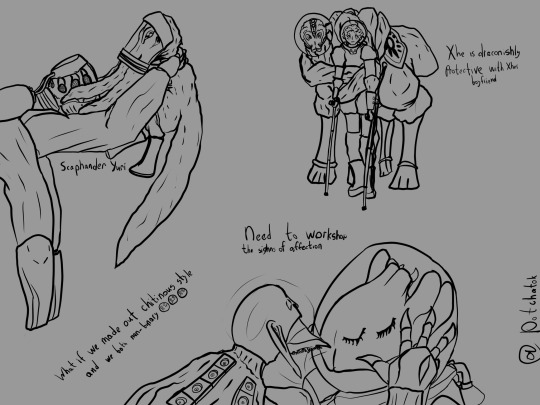
Space suit Romance 💛🌌
#art#sutviprra#speculative biology#spec bio#alien design#exobiology#spec evo#digital art#romance#monster#scifi
9 notes
·
View notes
Text
The entire planet maptoglobe render
#sutviprra#art#worldbuilding#speculative biology#spec bio#alien design#exobiology#spec evo#speculative evolution
7 notes
·
View notes
Text
On the opposite side of the continent, the culture of Kāwnukujur’ tries to survive. Historically on Earth, hunter-gatherers are more healthier and successful than any agricultural societies. Other sutviprra of Tofur’akuiwer call them Nyzgöts for their smaller size, both because of their diet and islander ancestry. To protect themself from unfair adversaries, some tread into the mountain valleys, but lowland sutviprra become more organized and engineering, changing entire landscapes to prevent being overrun. The technology demandes unearthed new demands and issues - much like humans, sutviprra were not designed to be smart and tool-using, and while their anatomy supports them, it strains. Sutvipra have a very heavy head and bones and muscles of the spine do support it, it gets really tenuous, when they need to lift or drag something by their tentacles. An uncomfortable move may lead to serious injury and even paralysis from the neck down (though this term is inacceptable for sutviprra). Another weak point is the breathways, that go from the nostrils to all the front of the mussel, protected by nothing but superfluous cartilage. If you know, how an elephant would take a log - for sutviprra that may result in serious damage.
Kāwnukujur’ relationship to their disabled members is diverse, but generally they are preserved and respected. Some subsections raise their disabled status to the Kāsur’ - not necesseraly the ruling class, but those who are responsible for accounting of resources, jobs and plans for the community. While disabled kawār’ lose their ability to work, their ability to observe, count and think is put to good use and for it they are taken care of not just by their families, but by anyone in the town.

The accommodation for disability and agriculture - nōhākuj, though mutated and domesticated since the times from before Nyrrawās, makes it difficult to travel and escape the reading from the Wodiakukār’ - bigger sutviprra of the same region. The Kāwnukujur’ have to build some kind of fortifications, while accounting for inadequacies of their anatomy. After a lot of trial and error they figured out implements, comparable to the wheel in it’s significance - Kakukfurr’nys - mussel corset, a wooden or boney plate fastened to the head, protecting the breathing tube from the weight, allowing common workers to lift heavier weight. While very helpful, reducing traumatic incidents dramatically, this doesn’t solve the problem of spine connection - this requires more sophisticated construction of a much more complex structure. Luckily, another domesticated plant in their repertoire is a Koenys tree, which’s resin and fruits, after certain procedure, rubber-like substance is produced - Ojēnynonukujur. While still hot, the substance is poured into the wood-carved forms, gets cooled and utilized either like a glue or made into elastic belts and fastened onto the bone axes and the entire construction is fastened onto the back, providing additional force and dissipating stress - outside construction is more likely to break by the accidental design, saving the carrier. Operators of Ojēnynokujurran are more risky and yet more regarded, as traumas are still not averted completely.

Innovations in accommodation and demand for organization startet up so far unprecedented development of towns and even substantial cities. Mostly, such cities spring on the cities of the river Nōfur’nuch and Tonuch. Another river in the region, Rakāwardanuch is notorious as it is a natural border for Kāwnukujur’ from the Wodiakukār’, and therefore on it’s shores cities are closer to fortresses and kawār’ who live there are more militarized, even developing a woodwooven shield and a tricky martial art, relying on it.

#sutviprra#art#worldbuilding#speculative biology#spec bio#alien design#exobiology#spec evo#speculative evolution#digital art
5 notes
·
View notes
Text
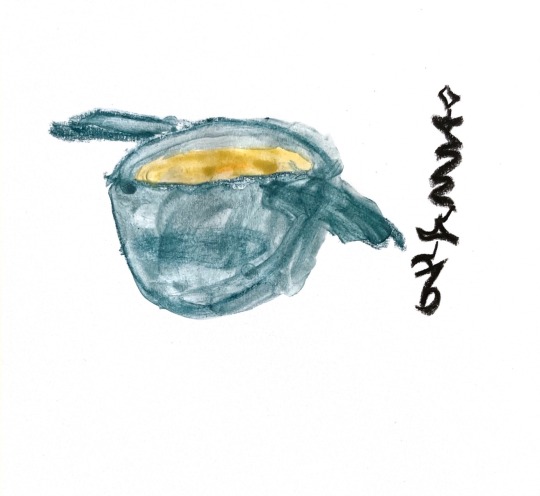
Spiced nōhākuj soup in a communal pot (kujunyys)
#sutviprra#art#worldbuilding#speculative biology#spec bio#alien design#exobiology#spec evo#speculative evolution#food drawing#i was forbidden from using a pencil
0 notes
Text
Attention!!! One and only Boopable specevo blog!!!

you are beimg researched but don’t worry about it
#sutviprra#art#worldbuilding#speculative biology#spec bio#alien design#exobiology#spec evo#speculative evolution#digital art#boop
5 notes
·
View notes
Text
Animation of a couple of SodGol animals I’ve done for uni
#sutviprra#art#worldbuilding#speculative biology#spec bio#alien design#exobiology#spec evo#speculative evolution#digital art#animation
9 notes
·
View notes
Text

Hylics Crew in DnD
For different characters I have different portrail preference
Not the best of my work but I need to do things
10 notes
·
View notes
Text
This is canon, sutviprra be doing this
16K notes
·
View notes
Text
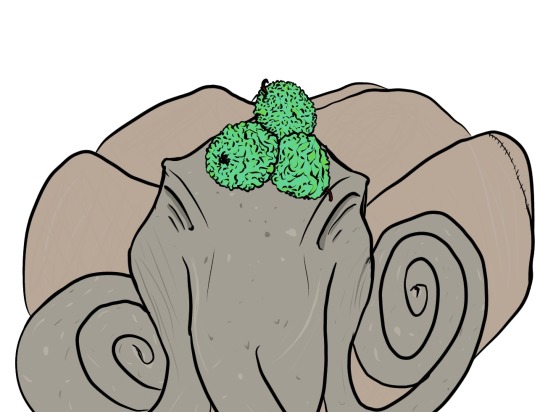
So far there's several plants and animals, from which Sutviprra get their food. They forage and hunt indescrimenantly, but some plants on the Rrusom-Rrom peninsula are distinguished by the sutviprra to be more bountiful than other.

Some plants have more taste because they evolved to be poisonous to Exaostea, some develop tubers as a bacterial symbiosis and some result from the bacterial infection - plants were modified by the pathogen to provide them with shelter and sugar but same feature turned out to be desirable for the Sutviprra

One steppe dwelling proximaptera produces both fertilized and mislead eggs, and makes several nests, only one of which is guarded. Sutviprra pick up on this adaptation and harvest the eggs from the nests.
There are no "rodents", their niche is taken by crab-like creatures, capable of cracking up seeds with their claws. So far they are no pain, but their habitat commonly overlaps with Sutviprra's
#art#digital art#speculative biology#creative writing#sutviprra#exobiology#spec bio#spec evo#worldbuilding#alien design
5 notes
·
View notes
Text

Close, continuous contact between Sutviprra and Kurrezem without any understanding of illness transmission and sanitary practices leads to plague, which ravages populations around the lakes. Entire tribes are wiped out, leaving hauntingly deserted camps. Sometimes, only individuals survive, but those either die on their own or find a new clan, but spread the pathogen onto them. Previous sentence applies to both Sutviprra and to Kusùm, with crows being able transmit it over a great distance. This crisis provoked a mass migration, Some moved inland, mixing with previously uncontacted tribes, some braved the mountains, and some dared to go out onto the open sea. Sutviprra of Vunónàún encounter the limit of their anatomy - like with early Unzu, they cannot go through rocky terrain without damage to their hooves. However, they don’t have as good of a culture of leatherwork, so these families develop the philosophy of daily routine and rest. Yes, they don’t travel a great distance, but they preserve their health, so in the end such culture manages to prevail in the isolated mountain valleys. In time, another Sutviprra arrived in the region. Descending from Lun Mauñuts all the way across the continent, Sutviprra riding on the backs of the domesticated Arctotheria. That arrival provoked upheaval in the Rrék, long struggle for domination which ended in some sort of equilibrium - generally rocky highlands are taken by Lan Mñats, while lowlands are more of a Rrék territory. These wars don’t in any way limit trade in exchange - even in lowlands, Arctotheria are commonplace.
Sea-ferrying tribes at first use the vessels they used for traversing lakes, but with time get more specialized for far greater distances and more dramatic weather. They reach the island chain near the shores of Vunónàún and the opposite shore of the Kùrón, where the settlers split into people of Fúsy’n Jotémeruk and Jorrón. As Sutviprra, Kuzerrem did survive the plague and followed them, whenever they went.
#sutviprra#art#speculative biology#worldbuilding#spec bio#alien design#spec evo#exobiology#digital art#speculative evolution
9 notes
·
View notes
Text
Thousand years pass, and the echoes of the Nyrrawās are apparent. Many Kafurr’ had left any agriculture, carrying on any traditions or stories of the settlements in more mobile forms. Such people adopt a new name Kaiurr’ diss aligning themself from the cult of crops. Remnants of the Kafurr’ are a small state on the coast, employing rivers to hinder any potential raids and a number of city states, hiding themself in mountainous regions, where they are shielded by the landscape. Kafurr’s southern offshoots adopt a river-faring nomadic lifestyle. Going down with the flow, they meet and interact with similarly adapted migrants from the Tonuwērdai. Ēwar’ recognize their shared lineage and fate, dubbing their northern neighbors Kayarunar’ - “Folk that look like us”. Some sailors of Nuch Wejykōiur find G’utölan - Sutviprra of Nyzymagaf’öl zhan, who managed to win over some more territory for them. Interestingly enough, these territories are gained through assimilation, rather than conquest, but the deeper in their territory you go, the more isolationist G’utölan get, as a remnant of their founding circumstances.To the north, islands Wkonuwēr, Wower and Fulel’ had developed their own identities and politics. In particular, Natives would not name the whole island Fulel’ - only the south-eastern part, closer to other Kafurr’, but as you move westward and cross the river, you get to Kōhonidai. To the north - Beyond the Yawelār mountains it is Kuzisōw - land particularly isolated, and so Sutviprra there move away from their previous identities quicker. Some researchers continue to explore along the Tofur’akuiwer coast, across the Worowalasōw sea.
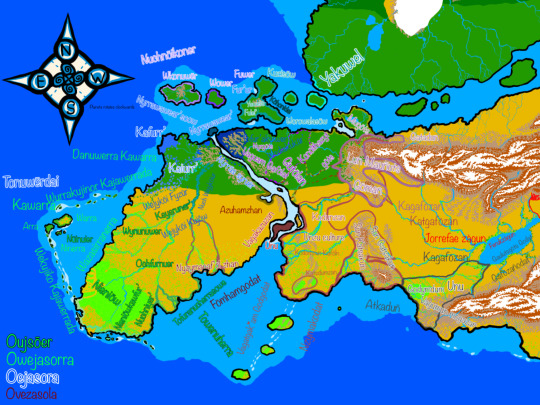
In fact, Kūwnukujur’ of the coast are in a very interesting position. They themself are resigned to the mountain valleys, because open territories are populated by other tribes, some of them speaking alien, but seemingly complex language - they encounter Gutölan, but overwhelmed researchers dub them Wodiakukarr’. Gutölan on the other hand, are alarmed by tighter competition with Sutviprra with smaller body size, but more engineering Nyzgöts from the east and less sophisticated culturally, but capable in their own right Konölthazyt göts. Gutölan populations, who approach the mountains have a chance to meet uninviting on the first glance, but capable and ready for trade and communication - Lun Mauñuts - Unzu, who herd and live off of mauñuts - bipedal nimble and resilient creatures. Rarely, after a lifelong connection between Sutviprra and Mauñuts one could become a rider - the one, who is trusted by the animal so deeply they allow an individual to climb their back.
South from the Göman mountain range, the Unzu family admire a wild landscape. Savannah of Kodomzun Kaföln is a place with a unique flora - what looks like trees are endemic to this region and come from cactusoids and drought resistant plants found nowhere else. Environments get truly weird in the jungles of Katsdumzan. Apart from consisting of endemic flora, Jungles stand in a place with no rivers. Despite receiving frequent rains, some plants still had to evolve to capture and preserve water, their stems and leaves contorting into vases or pots. Closer to the shore, more novel plants appear. Like earth’s palm trees, their seeds can clear great distances on water - in this case seas Nzymakodat and Atkaduñ. Over the range of Sun Gatsakun, another offshoot of Unzu, this time western Unu are the pioneers from their civilization. To the north of them - Kagafözan desert, another jungle biome, this time consisting of whatever plants crawled their way here up the rivers. From the west, unfortunately, nothing inviting comes. First time their ancestors made their way here, they may have distressed kutharrnuzezha - intelligent bird-like creatures who happen to have great memory, web of contacts and symbiotic relationship with Rraferuk - Sutviprra of this region. From that time, these birds alarm any tribes of danger, and any attempts of contact are met with defensive violence.

In the meantime, Tharrtharr diversified, splitting into two distinct groups - lower shore Sárrsárr have access to the more temperate forests of the Kùrón shores - Jozén. Their access to wood and opportunities for water travel proliferated raft building and river faring. Thaarr of the northern lake coast are isolated in their resources, and as Sárrsárr expansion northwest started, they have to move east in search for a better chance. Also, Thaarr have become somewhat of the Sárrsárr’s natural enemies, with Thaarr resort to stealing vessels and produce of Sárrsárr.
Kawarra - Sutviprra, who still hold the Tonuweerdai islands, keep active trade going from Wurrakujinor Kajawerrada to Tofuranucherrasowe. Keeping intact with jungle culture, they spread name for the continent to all - Eekisur’ “Oujsōer” becomes Kakasurra “Owejasorra” to Kaaisur “Oejasora” and Gutölanaf “Ovezasola”.

#sutviprra#art#speculative biology#spec bio#worldbuilding#alien design#exobiology#spec evo#speculative evolution#digital art#map drawing#map making
3 notes
·
View notes
Text
During the active development of societies and languages, Sutviprra on the western side of the continent are only getting their bearings. Most of the Sutviprra activity happens on Koujsōer. On the bigger, western continent mountain range, known as the Sun Gatsakun and Götstchumsumzan has served as a barrier for their further proliferation. Mostly, only Unzu had moved both northward and southward, having the ability to safely and sustainably walk on rocky terrain. They are able to occupy highlands and can be found both to the north and the south. Without contact, they start to drift apart in language and culture expression. Southern Unzu are on the verge of crossing another mountain range and discovering uncharted lands, never before visited by any other Sutviprra. Northern Unzu enters temperate lands, interacting with lowland unconnected tribes and are on the verge of entering the steppes beyond the mountains.

Meanwhile, from those, who established their lives on the shores of giant lakes, another connected culture arises. They refer to themselves as Rraferuk. Their identities and lives are intertwined with the lakes, which serve as the main catalyst of life in this region. The proximity to water allows them to cool off, catch fish, gather edible plants and ambush animals, who arrive to drink themselves. With that, Sutviprra came both as a prey and as competition with a big crocodilian creature, whose name in this region is Thazeruk. Fallstalkers, capable of both tree climbing and long-term chasing are the biggest threat any Sutviprra can encounter, and they are dubbed Kythoro. Spearwolfs - Thatoze, who do not dare directly hunt Sutviprra parties, happen to compete over the game and scavenge opportunities.

Outside observers will notice differences in behavior - Rraferuk are less stressed and anxious, at times to the scary degree. This is because sentinel duties are offloaded to a symbiont species - crow-like creature, already discussed in an entry from a while ago. Kutharruzezha were not adopted by Sutviprra as pets. Other way around - perceptive Tetracornas had over several generations inserted themself into the Sutviprra way of life. While lacking capability for complex tool use, Kutharruzezhas use their smarts to observe other creatures and even shift it for their own benefit. As they look out for potential prey or enemy for the Sutviprra, they ensure that Sutviprra continue provide them food and shelter.
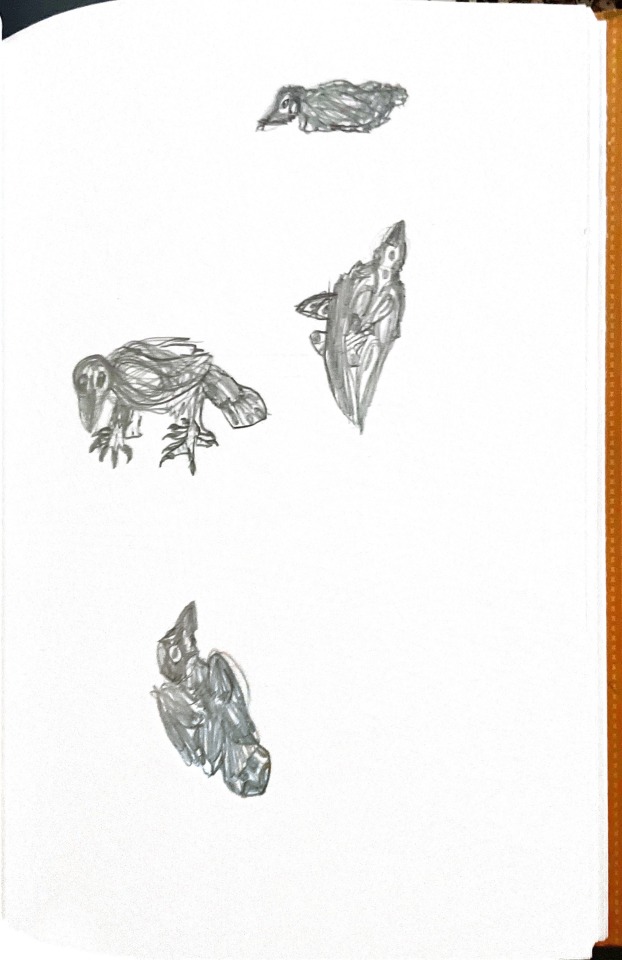
#sutviprra#art#speculative biology#worldbuilding#spec bio#alien design#exobiology#spec evo#speculative evolution#digital art
10 notes
·
View notes
Text
While there is development and diversification of Sutviprra, there is also death and disaster brewing. In an area known to Kafunukujurr’ as Iakui Syrrwer - Big Canyon volcanic activity, earthquakes have been recorded more and more. For the sages, who recorded and investigated the phenomena, these pulses may be movements of the giant creature, on which they all live - their cosmology dictates that everything is alive, and their islander heritage points out how earth is not a singular thing. So, Kafunukujurr’, though living on a continent, believe themself to be living on several “islands”, with boundaries such as rivers or, indeed, revienes. Their occasional movement indicates either them just waking up with no malice, or their way to express displeasure. Their model of the planet turned out to be closer to the truth - both the island from which they started and the area they inhabit currently is on the border of a tectonic plate, and the Big Canyon is a continental rift. However, this ridge is under sea levels at multiple points. Sea is separated from the canyon by a large geological formation that is affected not by two, but three geological plates. While two plates separate from each other, the third one is getting pushed deeper and deeper into the opening. This tectonic stress and the effects of water erosion makes the Wall Stone a ticking clock. Once, Kafunukujur’ foragers may discover several openings, gushing sea water. It may even form ponds of water with salt and minerals, freed from erosion. These ponds, perhaps, even used for some medicinal purposes. However, the pond is overflowing, there are more and more splinters and cracks and earthquakes seem to be more frequent. In the known world for Kafunukujurr’ and beyond there are many local disasters - landslides and sudden riverflow changes haunted Sutviprra who lived nearby.
At first, this disaster was slow moving - saltwater ponds kept filling and overflowing into the lowlands of the Iakui Syrrwer. They even reach the lands of warring northern tribes, where they are interpreted in a diverse range of ways. However, water erosion, tectonic pressure and the age are wearing off the wall in between sea and the reiveen. This erosion does not happen on the same time scale, as a stone age Sutviprra life, so as once these pools were a novelty, and now they are an accepted feature of landscape. As their appearance was not anticipated, there is no reason to expect further change. Grand-children of those who discovered the pools, now experience the next part of a story beyond them. During an unprecedented earthquake felt all throughout the continent, the wall is finally dislodged and overwhelmed by the shifting of water. Wall of rock, mud and water, collecting any trees on the way, streams all the way from the previous shore to the Lake of Order. The geological feature, that once united the entire culture, is now decimated, becoming extremely muddy and salt-saturated, the landscape northwest of it collecting all the debri from thousands of miles away. Some very unlucky foraging parties or traveling tribes might have been swept up by the formation of the new gulf, leaving no world behind. Even weirder, some spaces have been left like islands, surrounded by rubble, and what might be the fate of Sutviprra, stranded there? Witnessing the calamity and living to tell the tale is an interesting experience. Kafunukujurr’ named the place and the event Nurrawas - Breach, and the island, from which one could see the new entry is now personified as a witness of the disaster - Nurraswawear’. From the side of Kastakama, the story is even more somber - their home environment is now decaying, with remnants of their lake drying up. In the next several decades, the desert and savanna they new is bit by bit shifted by earthquakes into the new sea, now cutting them from Unzu - the majority of “faceless” Sutviprra. Descendants of Kastakama follow disperse and many follow the dried up riverbed. This river flowed out of Lake of Order to the southeast, and sometime ago a passing tribe shared words about the great body of water with no visible end.
Sudden spike in earthquake also did provoke the activity of volcanoes, and for all individual tragedies they might produce, they also cause a cold spike to shorelines to shift - oceans recede, uncovering weird underwater fauna, and the beginnings of agriculture by Kafunukujurr’ are undercut by eruption induced years without summer, acid rains and shifts in temperature. Their centralization becomes unsustainable, Kakujufurr’ elites bicker and break up, and many city detach and start to fend for themself. Some of them migrate southward, chasing the favorable climate, settling on the shores of the river Wejykōifur. Some families, mostly of fishers, decide to brave the unknown and settle the uncharted islands of Wowerdai and Fur’wer.
The Kaikaiwar of the islands, completely free from Kafunukujurr’, find themself in a destroyed environment, after two audacious empires exhausted the resources of the islands. To stay is to be the braver one, adapting to the new environment and risking it all. Most migrate to the continent, adapting either to bountifull and lively jungles Nisnisōw or more familiar climate-wise, but without benefits of island rule - predators and potential game is three times larger and somewhat accustomed to Sutrpviprra presence. Savahnas of Kochfurnuer force them to stick to being exclusively river farring - they never abandon their vessel building and creating crafts.
Newcomers refer to the new land as Koujsōer, and their prevalence makes this world stick as the name for this continent.
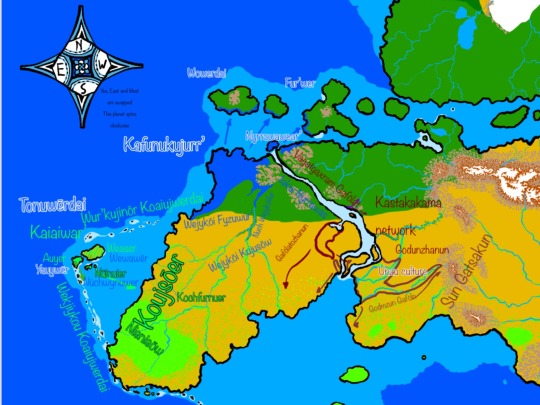
#sutviprra#art#speculative biology#worldbuilding#spec bio#alien design#exobiology#spec evo#speculative evolution#digital art
2 notes
·
View notes
Text
Illusive göts started to arrive at the Lake of Order “Gafölzu Godato”. From the west, sutviprra, who cover almost all of its body in intricate leathery garbs, They arrive consistently, commonly with possessions and weapons in small family groups. If groups are small, they join the existing tribes, but sometimes big groups of multiple coordinated soldiers try to raid a place on a lake. While having numbers and initiative on their sides, these groups never achieve any permanent territory. But they did integrate - they entered the Kastakama hunting parties, learned to speak Amomafo and followed their law of lands - Mulukun zhan. Originally they come from the mountainous region and therefore, they wear full body leather suits to protect themself from scorching sun from above and rough rocks from above. Now they can afford to be as pale as their skin can get, but it makes them somewhat reliant on their suits and, crucially, obscures the pattern on their webbing.

For sutviprra face, as in the front of the head doesn’t mean much - oftenly obscured by working trunk, eyes are unmoving, and brow ridges protect the eyes from the damage or sun. One reads their moods from the webbing on their front legs, where they open, angle or close the bright pattern - kaikuj in Kaikaisurr’, or ymzukaun for this culture. This pattern is unique to every individual. This pattern does not appear on sutviprra since birth - it consists of light-sensitive pigments, and, therefore, becomes visible after exposure to light. In almost all cultures, this is considered to be the visualization of the body acquiring the soul. If the birth occurs at night, the fire is kept near to bring the newborn near it’s light. There are different approaches to those, who do not seem to apparate - from thinking of them as spiritual conduits, capable of temporarily channeling other spirits of nature, or they are considered alien beings trying to infiltrate, and therefore killed off.
So the entire people, hiding their appearance, are very unsettling for the passerby. Culture, called Unuymazaunuzu by others, sees some outside world forces as inherently harmful, with sun ready to scorch their skin and stone under their feet is here to grind their hooves off. Their behavior outside - without covering from the sun and without a special ritual carpet - is very closed off and stoic, as you must not show your weakness to the evil forces. Inside, with their requirements satisfied, they can get out of their suits, pull off the boots and be as expressive as they want. Despite the superstitious rumors, they look normal, though pale, with the ymzukaun as bright as others. They lead normal lives, though colored by traditions, unfamiliar to Kastakama. These göts are very helpful in their knowledge of western territories, from where they came, and are really good messengers and scouts, because of their shoes - their hooves are better protected from stresses, so they are able to traverse longer distances.

#art#digital art#speculative biology#creative writing#exobiology#spec bio#sutviprra#spec evo#worldbuilding#alien design
8 notes
·
View notes
Text
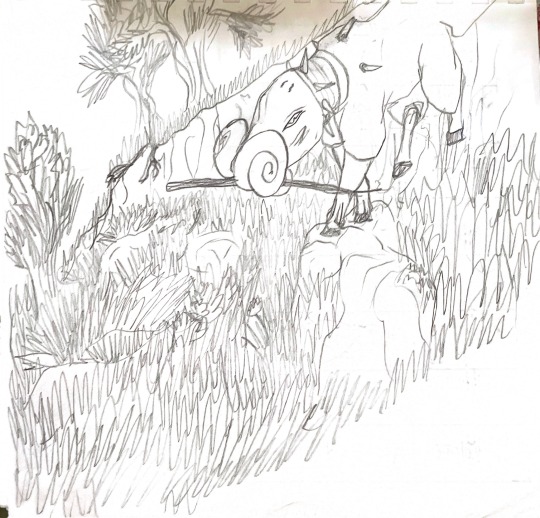
Kastakama do not venture into savannas, deserts or steppes. Sutviprra in general descending from semi aquatic species, still depends on bodies of water, especially not tolerating dry environments. Following the rivers that stream through the desert, they might get to and then settle a solitary lake, serving as a massive oasis. Göts who have settled here sooner or later master up water transport. As opposed to rafts of Kaikainuchwer, designed to spend months at sea, These vessels can be exclusively row-powered and not as contingent. The first lake mariners establish port infrastructure all around the lake, and over the next several centuries new families arrive, mix and diversify along with forerunners. Technology of boats improved, so some tribes adopted the lifestyle of sailing along the lakes. Despite very drastic differences in lifestyle, social roles remain.
Night shifts are very dangerous, with many predatory creatures waking up. Mozhzugöts have to look out for two notorious types of predators. Giant solitary monster - Godgaxramunu - Savanna Fallstalker. These giant birds, resembling a T-Rex in their body type and niche, stalk the night. There are families, whose disappearance is accounted only through personal belongings and traces, revealing several-day-long chases. Only survival stories, and therefore advised course of action, is to wake everybody up, stay close, get fire and whip any movement you sense. Sutviprra, being quadrupedal and with awkward weight distribution, are not the best marathon runners, unlike humans or other bipeds. Godgaxramunu may not achieve speeds over 40 km/h and have constant danger of tipping over, but they have a good sense of smell and very long strides. If this creature chooses its target, it begins to “haunt” it. At first approach Godgaxramunu relies on ambush, but if it’s seen, prey usually flees. The predator follows them at their own pace, and when it catches up, it starts creeping in again. With every failed attempt at stalking means that prey becomes more and more exhausted.
Another nightly predator is a medium sized pack tactics master. Nyzkölunuguts are canine-like creatures about the size of Sutviprra. They use complex vocalizations, to coordinate their attack. They position themself around the target, and then one of the wings starts to noisily approach, leading them to the main pack. Once they are in a position, attack proper begins. Nyzkölunuguts can peck the prey with their forward-facing fangs, giving it puncture wounds.
SodGolian predators are much more aggressive, making Fight or Freeze more viable, than Flight.
Despite all the dangers, Kastakama have time to explore and expand. All the tribes, who have settled on the lake shore, at first conflict over territories and resources, and after many conflicts a hierarchy of tribes and their rights. Interestingly enough, Gatozhanunu are proclaimed communal properties, so any member of agreement can shelter themself when need be. Irrefutable properties are things that one carries in their pouch, and there are some closed off foraging grounds, but generally göts are free to roam and hunt wherever they want to. Most of those hunting grounds are located on the south shores of the lake and belong to Ro-anömama - the most victorious tribe, who prevailed because of their use of traps in hunt, which they repurposed for warfare. These established tribes left more northern tribes pushed out of their regions, which encourages them to explore northward. Sailing upstream, they encounter lower temperatures and more life. In time, they reach temperate zones, where they discover an old mountain range, and a flourishing ecosystem around volcanic ridge. Through foraging and experiments, they settle over several edible plants and make their territory their own Amazhanunu - limited hunting grounds. Several conflicts started over the territories, facilitated because of the population growth.
#sutviprra#art#speculative biology#worldbuilding#spec bio#alien design#exobiology#spec evo#speculative evolution
12 notes
·
View notes
Text

Didn’t think I would manage to do this before new year
#art#digital art#speculative biology#exobiology#sutviprra#spec bio#spec evo#worldbuilding#alien design#season’s greason’s#man after man
13 notes
·
View notes
Text
Another Culture
While the Eastern coast and sea lives its own life, far inland another society is forming. The descendants of Middle East Steppe populations, with a varied array of tools they keep on their person at all times, have managed to explore deserts, savannas, steppes and temperate forests. Having started on shores of desert rivers, they learned to be both opportunistic and pacient, and, most importantly, crafty. While the Kaikainuchwer had a break from predators, having developed on islands, These people, the Kastakaama, have to be constantly on alert. While sometimes gender dictates a huge part of identity, in this society a huge part plays a shift one particular Sutviprra (Göts, in this language) choses to operate in.
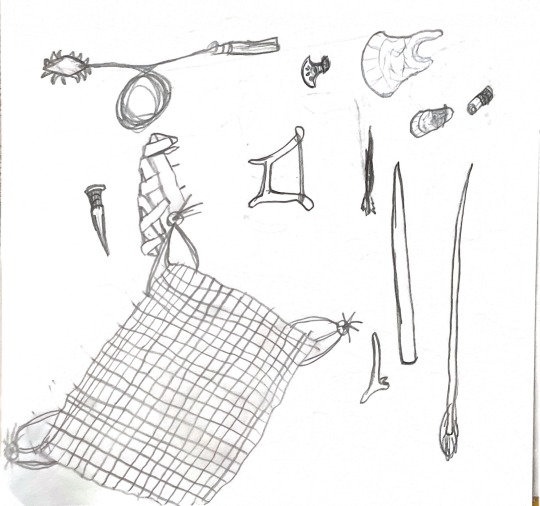
By themself, Sutviprra are not tied to time of day to function. Their ancestors could sleep for only four hours, but the newly grown brain demands much more “maintenance time��. So, to accommodate healthy sleep, while remaining constantly on guard, they adapted three shifts per day. The shifts are established in teens, when individuals decide on a graphic that is more comfortable for them. After that, in their adult life, they stay in their zone, while either staying on guard or performing their tasks. If their shift happens during dusk or dawn, a group of scouts set off to forage. As they return, food is prepared and saved, so currently sleeping members also get their share. During the day, the most dangerous factor is the environment - desert heat, sandstorms or floods. Most animals also avoid this time of day, but semi aquatic animals don’t have this constraint. Gafölatotsun is a giant ancient animal, convergently resembling crocodilians, though its four jaws give it more freedom of snapping. These animals rely on cover of water and ambush, but if they detect sleeping prey in the eyeshot, they would not miss their chance. Daytime centuries have to either scare off the predator, or wake everyone up. Though adult Göts is only quarter size of an adult Gafölatotsun, the river reptiles are very much aware of their disadvantage above the water surface. Worst case scenario is a genuine group of these beasts overwhelm the guardians. Mostly, the cause for wake up for all are natural disasters - flash floods from the rivers, coming from the mountains to the west, in cases of which Göts must retrieve to the highest point. Generally, those places are unstable sand dunes or rocky hills. Opposite of this situation is high temperatures. In those cases, Kastakama create communal dirt baths, though that usually puts them close to river shores, and therefore kastaGafölatotsun. Best natural solution to this issue are caves - any water-erosion caused pockets of shade, though there’s no telling if it’s already taken or not. So, in any crucial points of the families' yearly journey, one could find Gatozhanunu - a half underground building, constructed as a point to establish temporary camps inside and around it. Its subterranean nature and placements usually on the shallow shores, makes them vulnerable to floods. It frequently gets covered with sediment or even collapses. However, it is designed to withstand coverage. In fact, when the tribe leaves the Gatozhanunu, they cover entrances and windows with plastines of bone reinforced burnt clay, and as it gets buried, the house becomes sealed. When the family that built it returns, they excavate the building and unseal the building, with assurance that no unexpected dangers wait inside. Sometimes, the tribes perish, leaving the Gatozhanunu with no hosts. These rooms may be rediscovered during this age and adapted as new families safepoint, or, perhaps, these rooms may outlive this way of life, inspiring myths or providing knowledge for future generations.

#sutviprra#art#speculative biology#worldbuilding#spec bio#alien design#exobiology#spec evo#speculative evolution#speculative culture
8 notes
·
View notes